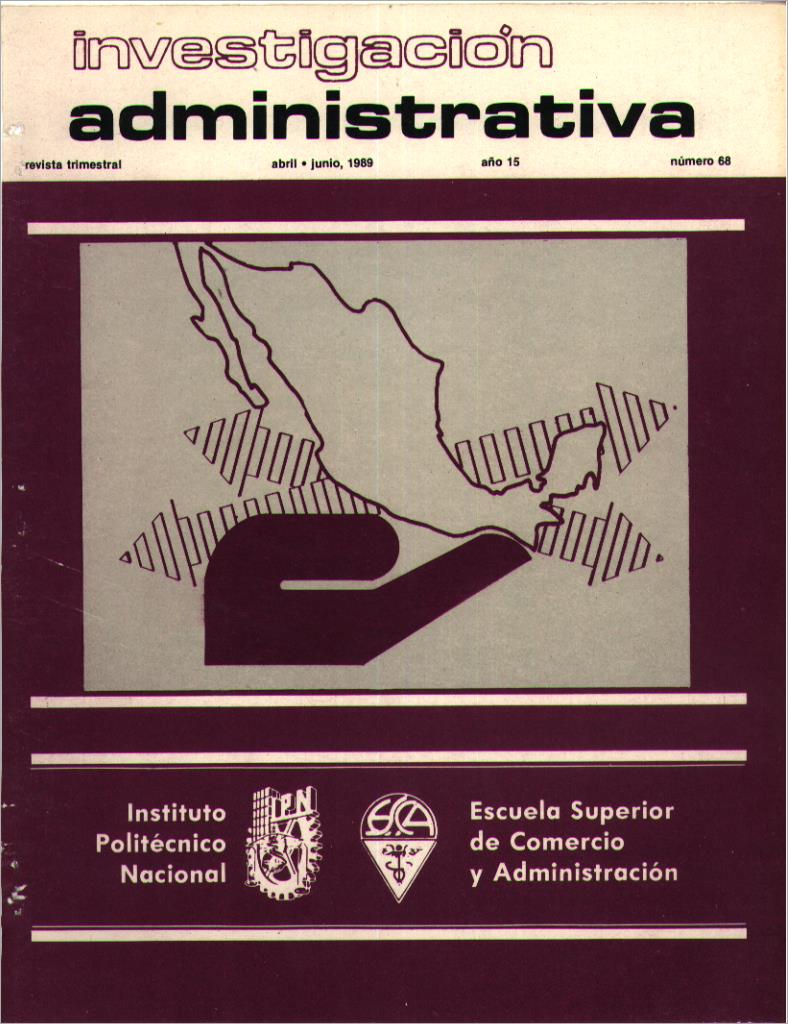La publicidad televisiva y su relación con los hábitos de consumo de productos nocivos para la salud
Contenido principal del artículo
Resumen
Las teorías de socialización son un medio para explicar la conducta del consumidor, tal como las utilizó WARD en 1974. Este enfoque se conoce como socialización del consumidor que en su acepción más simple es un pro ceso mediante el cual las personas adquieren valores, conocimientos, habilidades y motivaciones; además tie ne mucha importancia para el presente trabajo, prin cipalmente porque existe una serie de publicaciones que mencionan que la publicidad causa efectos negati- vos en la niñez, en la adolescencia y en la familia. Por ejemplo CHURCHILL y MOSCHIS, 1979; MOSCHIS y MOORE, 1982 y DOMINGUEZ 1988, siguieron este enfoque para explicar la influencia de la televisión y otros agentes socializadorcs en el cumplimiento del consumidor.
Detalles del artículo

Esta obra está bajo una licencia internacional Creative Commons Atribución-NoComercial 4.0.
Citas
Aguilar, M.J.E. (1987). “La Difícil Lucha Contra el Tabaco'*, Consumidor 130 (Diciembre), 34-35.
Aispiri, J.J.D. (S/F), “Problemática Social y Sanita
ria en el Tratamiento del Tabaquismo”, España, Editorial Centro Coordinador de las Drogadependen- cias, 5-14.
Akers, R.L: M.D. Krohn; L.L. KaduceyM. Radose- vich (1979), “Social Learning and Deviant Behav
ior: A Specific Test of a General Theory”, Ame rican Sociological Review, 44 (August), 636-655.
Bandura A. y R.H. Walters (1985), “Aprendizaje So
cial y Desarrollo de la Personalidad 8o Edición, Madrid, Editorial Alianza, 57-112.
Barnes, G.Mi y M.P. Farrell y A Cairns (1986), “Parental Socialization Factors and Adolescent Drinking Behaviors”, Journal of Marriage and the Family, 48, 27-36.
Bearden, W.O: R.G. Netemeyer y J.E, Teel (1989), “Measurement of Consumer Susceptibility to In terpersonal Influence”, Journal of Consumer Re search, 15 (March), 473-481.
Beltramini, R.F. (1988), “Perceived Believability of Warning Label Information Presented in Cigarette Advertising”, Journal of Advertising, 17 (1), 26-32.
Bloom, P.N. y M.J. Silver (1976), “Consumer Educa tion: Marketers Take Heed”, Harvad Business Ri- view, 54 (February), 149-150.
Brown, S.A: N.S. Goldman; A. Inn y L.R. Anderson (1980), “Expectations of Reinforcement from Al cohol: Their Domain and Relation to Drinking Patterns”, Journal of Consulting and Chinical Psy chology, 48, 419-426.
Bustamante, ME. (1974), “El Alcoholismo y sus Con secuencias Sociomédicas: Aspectos Sociomédicos”, Gaceta Médica de México, 107, 227.
Buzzell, R.D; y E.M. Nourse (1979), “Mercadotecnia,
Un Análisis Contemporáneo”, México Editorial Continental, 596.
Caballero, M; yJ.E. Chan (1986), “Gasto Publicitario en Televisión durante 1985”, Consumidor, 117 (Nov.), 11-13.
Cabildo H.M; M.S. Martínez y J.M, Juárez (1969), “En cuesta sobre Hábitos de Ingestión de Bebidas Al cohólicas”, Salud Pública de México, 11, 759.
Gasswell, S; L.L. Gilmore; y P, Brasch (1988), “What Children Know About Alcohol and How They Kno- wit”, Britsh Journal of Adiction, 82 (2), 223-227.
Clcyton, R.R; y W.B. Lacey (1982), “Interpersonal In terpersonal Influences on Male Drug use Inten tions”, International Journal of the Addictions, 17, 655-666.
Consumidor (1986), “Morir por una Fumada”, Con sumidor 110 (Abril), 15-19.
Churchill, G.A.; y G.P. Moschis (1979), “Television and Interpersonal Influences on Adolescent”, Jour nal of Consumer Research, 6 (June), 23-35.
Daly, P.A. (1976). “The Response of Consumers to Nutrition Labeling”, The Journal of Consumer Affairs, 10, 170-178.
Davis, K.R. (1988), “Administración en Mercadotéc- nia”, México, Editorial Limusa, 492-600.
Domínguez, H.M.L. (1988), “Influencia del Proceso de Socialización en el Comportamiento de Adoles centes”, s/p. 1-3.
Duffy, M. (1982), “The Effects of Advertising on the Interindustry Distributions in Economic Re search”, Explorations in Economic Research, 3 (Winter), 21-75.
Eron, L.D; L.R. Huesmann; M.M. Lefkowítz; y L.O. Waldor (1972), “Does Television Violence Cause Aggression”, American Psychologist, 27 (4), 253-263.
Expansion (1987), “Las Humeantes Cifras del Taba
co”, Expansion, 18, 9.
Fischer, L. (1988), “Mercadotecnia”, México, Editorial Interamericana, 316-365.
Franke, G; y G. Wilcox (1987), “Alcoholic Beverage Advertising and Consuption in the United States, 1964-1984”, Journal of Advertising, 16 (3), 23-30. Guerra, A.J. (1975), “El Alcoholismo en Mexico”,
México, Editorial Fondo de Cultura Económica, 20. Hastak, M; y J.C. Olson (1989), “Assesing the Role of
Brand - Related Cognitive Responses as Mediators
of Communication - Effects on Cognitive Structu
re”. Journal of Consumer Research, 15 (4), 444-455. Heinz, K.S; y U. Bartmann (1977), “Psicología del Fu
mar”, Barcelona, Editorial Arder, 33-128.
Horrocks, J.E. (1984), “Psicología de la Adolescencia”,
México, Editorial Trillas, 17-32.
Hundleby, J.D; y G.W. Mercer (1987), “Family and
Friends as Social Environments and Their Rela tionship to Young Adolescents Use of Alcohol, Tabacco, and Marijuana”, Journal of Marriage and the Family, 49, 151*164.
Hulse, S.H; 11. Egeth; y J. Deese (1982), “Psicología del Aprendizaje”, México, Editorial McGraw-Hill, S.A; 21-126.
INCO (1987), “Alcoholismo”, Kits sobre Alcoholismo, INCO, Mayo, 11-22.
INCO (1987), “Tabaquismo”, Kits sobre Tabaquismo, INCO, Mayo, 8-9.
Johnston, L.D; y P.M. O’Malley (1986), “Why do the Notion's Students use Drugs and Alcohol? Self-re ported Reasons from Nine National Surveys”. Jour nal of Drug Issues, 16, 16-29.
Lefkowitz, M.M; R.R. Blake; yJ.S. Mouton (1955), “Status Factors in Pedestrian Violation of Traffic Signals”, Journal of Personality and Social Psicho- logy, 51, 704-706.
Ley General de Salud (1989), Mexico, Editorial Libros económicos, s/p.
Machleit, K.A; y R.D. Wilson (1988), “Emotional Fee lings and Attitude Toward the Advertisement: The Roles of Brand Familiarity and Repetition”, Journal of Advertisings, 17 (3), 27-35.
Márquez, A.I). (1979), “Subconsumismo”, Uno Más Uno, 21 de Die; 4.
Mas, C.C: A. Manrique; C. Varela; y H. Rosousky (1986), “Variables Médicas y Sociales Relaciona das con el Consumo de alcohol en México”, salud Pública de México, 28 (5), 473-478.
McDavid, J.W: y H. Harari (1979), “Psicología y Con ducta Social”, México, Editorial Limusa, 143-144.
McNeill, D.L; y W.L. Wilkie (1979), “Public Policy
and Consumer Information: Impact of the New Energy Labes”, Journal of Consumer Research, 6
(1), 1-11.
Molina, P.V; y L.M. Sánchez (1982), “El Alcoholismo

